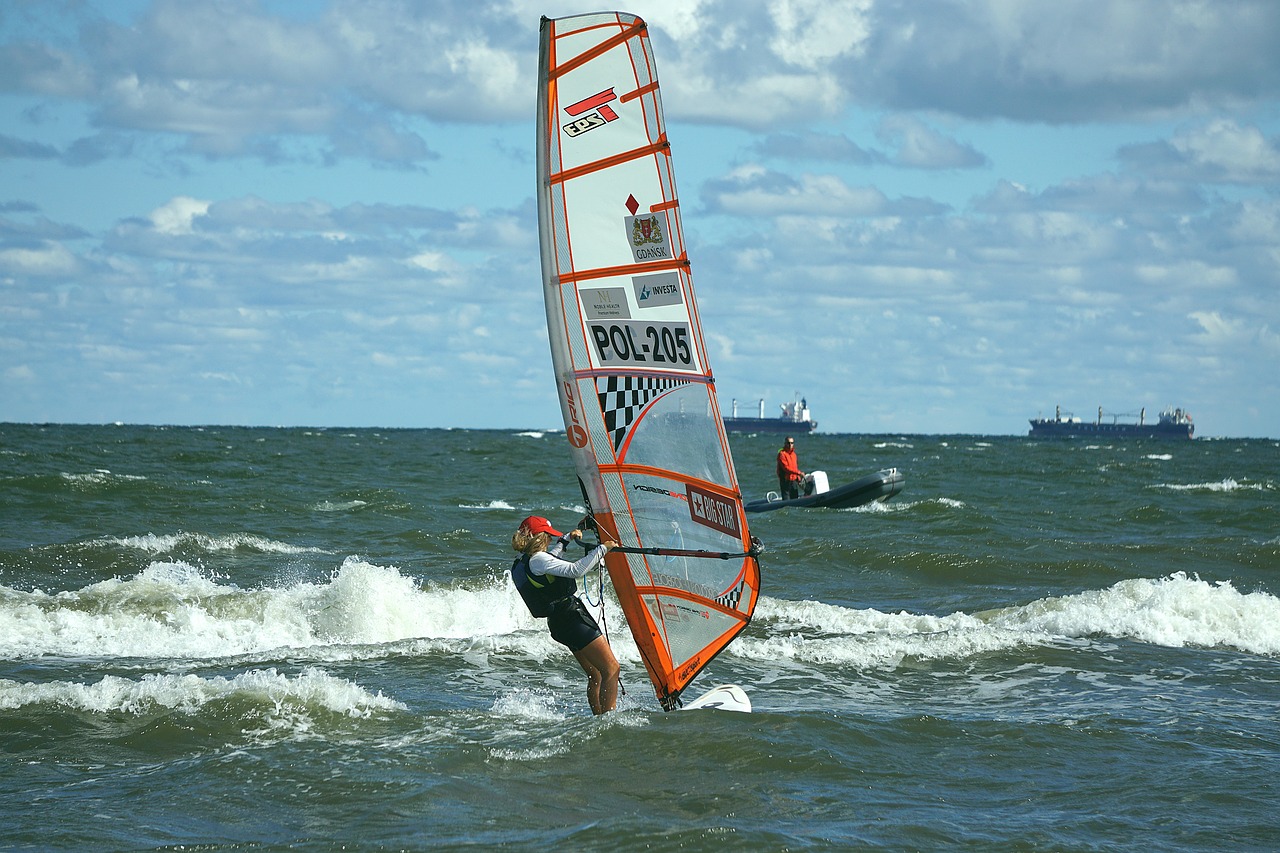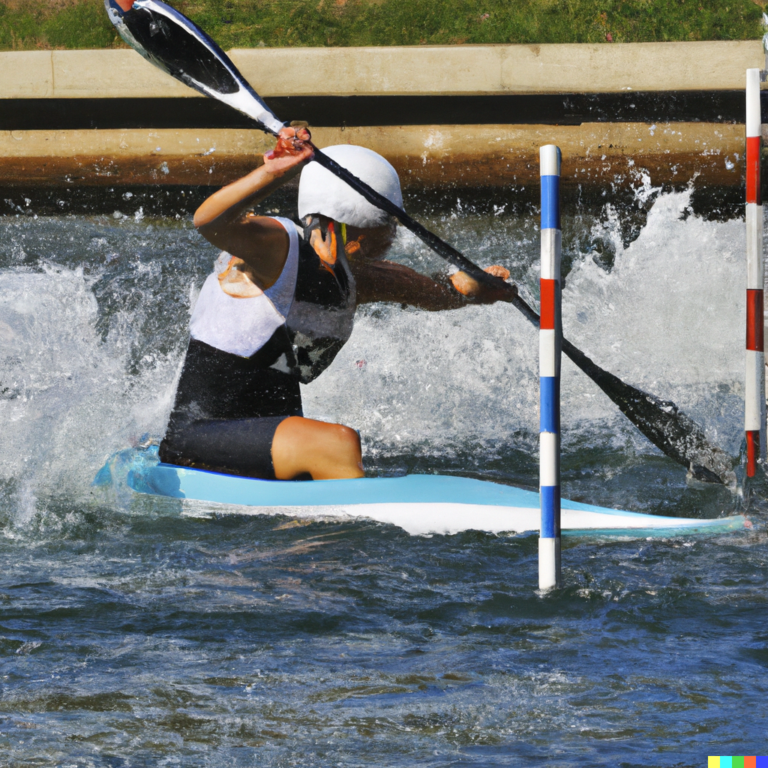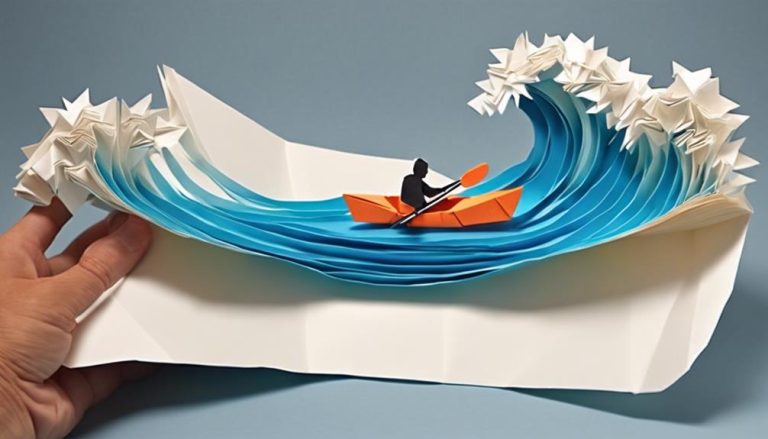General Rules of Windsurfing
Windsurfing is an exhilarating water sport that involves gliding on a board while navigating a sail. Maneuvering the equipment takes practice, but understanding the general rules and techniques will get you up and riding the wind safely and courteously. The basics include how to stand on the board, set up the rigging, control sail position, follow right-of-way regulations, and implement safety measures. Learning these fundamental windsurfing rules as a beginner will ensure an enjoyable time on the water.

This article outlines key guidelines, etiquette, and best practices for the sport of windsurfing. We’ll review recommendations on stance, foot placement, and balance on the board from starting position to riding. Proper rig setup and sail positioning for different wind conditions will be explained as well. Right-of-way rules to safely share the water with other windsurfers and boats will also be provided. Safety recommendations including use of a leash, protective gear, and basic windsurfing maneuvers will be covered too.
Whether you’re about to take your first windsurfing lesson or looking for a refresher, understanding these general rules is essential. With the right knowledge, you can confidently get out on the water to harness the power of the wind. Let’s begin by discussing how to find the proper balance on the board before leaving the shore.
Right of Way Rules
Do you know the right of way rules when windsurfing? Understanding and following these rules is crucial for maintaining safety on the water and avoiding collisions.
When windsurfing, it’s important to know who’s the right of way in different situations.
The general rule is that the windsurfer on the starboard tack has the right of way over the windsurfer on the port tack. This means that if you’re on a starboard tack, with the wind coming over your right shoulder, you have the right of way and should maintain your course. The windsurfer on the port tack, with the wind coming over their left shoulder, must yield and alter their course to avoid a collision.
In addition to the starboard tack rule, there are a few other right of way rules to be aware of. If two windsurfers are on the same tack, the upwind windsurfer has the right of way and the downwind windsurfer must steer clear. When approaching another windsurfer head-on, both should alter their course to avoid a collision.
By understanding and following these right of way rules, you can ensure a safe and enjoyable windsurfing experience for yourself and others on the water.
Remember to always be aware of your surroundings and communicate with other windsurfers to avoid any potential accidents.
Stay safe and happy windsurfing!
Equipment and Gear Regulations
Now let’s talk about the important equipment and gear regulations in windsurfing.
To ensure your safety on the water, it’s crucial to have the necessary safety equipment, such as a life jacket and a leash.
Additionally, there are specific specifications for your board and sail that you need to adhere to.
Lastly, don’t forget about proper gear maintenance to ensure longevity and optimal performance.
Safety Equipment Requirements
Make sure you’re wearing the proper safety equipment before hitting the water for windsurfing. Safety is of utmost importance when engaging in any water sport, and windsurfing is no exception.
To ensure your safety, there are certain equipment requirements that you need to adhere to. First and foremost, wearing a well-fitted, Coast Guard-approved personal flotation device (PFD) is essential. This will provide buoyancy and help keep you afloat in case of an emergency.
Additionally, a helmet is highly recommended to protect your head from potential injuries, especially when windsurfing in challenging conditions. A wetsuit or drysuit is also necessary to keep you warm and protect your body from cold water temperatures.
Lastly, don’t forget to wear water shoes or booties to protect your feet from sharp objects and provide extra traction on the board.
Board and Sail Specifications
Ensure that your board and sail meet the specified equipment and gear regulations for windsurfing.
Having the right board and sail is crucial for a successful windsurfing experience. The board should be between 200 and 250 centimeters long, and no wider than 85 centimeters. It should be made of a sturdy material like fiberglass or carbon fiber, ensuring durability and stability.
The sail, on the other hand, should be appropriately sized based on your weight and skill level. It should have a boom length that allows for comfortable hand placement and control. Furthermore, the sail should be made of durable and lightweight materials, such as monofilm or Dacron.
Always check the regulations set by the governing body of windsurfing to ensure that your equipment meets the required specifications, guaranteeing a safe and enjoyable windsurfing experience.
Gear Maintenance Guidelines
Take care of your gear by regularly checking and maintaining its condition according to the equipment and gear regulations. Proper gear maintenance is essential to ensure the longevity and optimal performance of your windsurfing equipment.
Start by inspecting your gear before and after each session. Check the board for any cracks, dings, or delamination. Inspect the sail for any tears, loose stitching, or worn-out battens.
Clean your gear after each use by rinsing it with fresh water to remove any salt or sand. Store your gear in a cool and dry place, away from direct sunlight. It’s also important to follow the manufacturer’s guidelines for maintenance and storage.
Safety Precautions
You should always remember to regularly check your equipment before going windsurfing. Safety should be your top priority when engaging in this exhilarating water sport.
Here are some essential safety precautions to keep in mind:
- Wear a Personal Floatation Device (PFD): A PFD is a crucial piece of safety equipment that can save your life in case of an accident. Make sure it fits properly and is in good condition.
- Check the Weather Forecast: Always check the weather conditions before heading out. Avoid going windsurfing in strong winds, thunderstorms, or poor visibility.
- Know your Limits: Windsurf within your skill level and physical capabilities. Don’t attempt maneuvers or conditions beyond your abilities, as it can lead to accidents and injuries.
- Stay Hydrated: Windsurfing can be physically demanding, so it’s important to stay hydrated. Bring plenty of water with you and drink regularly to avoid dehydration.
- Be Aware of your Surroundings: Keep an eye out for other water users, such as boats, swimmers, and fellow windsurfers. Be respectful and give them plenty of space.
- Learn Basic First Aid: Knowing basic first aid can be invaluable in case of accidents. Take a course or familiarize yourself with basic first aid techniques.
Weather Conditions to Consider
When planning a windsurfing session, make sure to check the weather conditions beforehand. The weather has a significant impact on the safety and enjoyment of your windsurfing experience.
Here are some key weather conditions to consider before hitting the water.
Firstly, pay attention to the wind speed. Ideal windsurfing conditions usually involve wind speeds ranging from 10 to 25 knots. It’s important to assess whether the wind is too light, as it may make it difficult to maintain speed and control. On the other hand, strong winds can be challenging for beginners or those with less experience, as they can lead to overpowering and loss of control.
Secondly, consider the wind direction. Cross-onshore winds are generally preferred, as they allow you to sail both upwind and downwind comfortably. Offshore winds, where the wind blows directly from the shore, can be dangerous, as they may push you further away from the safety of the coastline. Onshore winds, blowing directly towards the shore, can make it difficult to return to the beach.
Lastly, take into account the weather forecast. Check for any incoming storms or severe weather conditions that could pose a risk to your safety. Thunderstorms, for example, can bring strong winds, lightning, and heavy rain, making it unsafe to be on the water.
Etiquette on the Water
To ensure a smooth and respectful experience on the water, always be aware of your surroundings and follow the rules and guidelines set by the windsurfing community. Etiquette on the water is crucial to maintain a safe and enjoyable environment for all windsurfers.
Here are some key points to keep in mind:
- Right of Way: When two windsurfers are on a collision course, the upwind sailor has the right of way. It’s their responsibility to avoid a potential collision by altering their course or speed.
- Give Space: Maintain a safe distance from other windsurfers, especially when they’re performing maneuvers or riding waves. Respect their personal space and avoid interfering with their progress.
- Communication: Use hand signals and clear gestures to communicate your intentions to other windsurfers. This helps to avoid confusion and minimizes the risk of accidents.
- Respect for Others: Always be courteous and respectful towards fellow windsurfers. Avoid yelling, aggressive behavior, or hogging the best spots on the water.
- Environmental Awareness: Windsurfing takes place in natural environments, so it’s essential to respect and protect the ecosystem. Avoid littering, refrain from disturbing wildlife, and be mindful of any protected areas.
Emergency Procedures and Rescue Techniques
Now that you’ve learned the basic rules of windsurfing, it’s important to be prepared for any emergency situations that may arise. In this section, we’ll discuss swift water rescues, CPR and first aid techniques, as well as equipment retrieval techniques.
These skills are crucial in ensuring the safety of yourself and others while out on the water. So let’s dive into these emergency procedures and rescue techniques to equip you with the knowledge and skills you need to handle unexpected situations with confidence.
Swift Water Rescues
If you find yourself in a swift water rescue situation while windsurfing, remember to stay calm and follow these emergency procedures and rescue techniques.
The first step is to assess the situation and determine if you can self-rescue. If you’re unable to do so, signal for help by waving your arms or shouting for assistance.
It’s important to communicate with others nearby and let them know you need help. If someone is able to reach you, grab onto their board or boat and let them assist you to safety.
If there’s no one around, try to stay afloat and conserve your energy until help arrives. Remember, swift water rescues can be dangerous, so it’s crucial to remain calm and follow the necessary procedures to ensure your safety.
CPR and First Aid
Remember, in emergency situations while windsurfing, your knowledge of CPR and first aid can be crucial in providing immediate assistance and potentially saving lives. Accidents can happen on the water, and being prepared to handle them is essential.
CPR, or cardiopulmonary resuscitation, is a life-saving technique used to revive a person who’s stopped breathing or whose heart has stopped beating. Knowing how to perform CPR correctly can make a significant difference in the outcome of an emergency situation.
Additionally, having a basic understanding of first aid can help you treat minor injuries and stabilize a person’s condition until medical help arrives. It’s important to familiarize yourself with these emergency procedures and rescue techniques to ensure the safety of yourself and others while enjoying the exhilarating sport of windsurfing.
Equipment Retrieval Techniques
Make sure you know the proper equipment retrieval techniques and emergency procedures in case of any mishaps while windsurfing. When it comes to retrieving your equipment, it’s important to act quickly and efficiently to avoid any further complications.
If you find yourself separated from your board, try to stay calm and assess the situation. In most cases, you can swim back to your board using a combination of freestyle swimming and backstroke. However, if the wind is strong or you’re unable to reach your board, it’s crucial to use the sail as a flotation device. Grab onto the boom and let the sail support your weight until help arrives.
Frequently Asked Questions
How Long Does It Take to Learn Windsurfing?
Learning windsurfing can take anywhere from a few weeks to a few months, depending on your dedication and practice. It’s important to take lessons, practice regularly, and be patient with yourself as you develop the necessary skills.
What Are the Best Locations for Windsurfing Around the World?
When it comes to the best windsurfing locations around the world, you’re in for a treat. From Maui to Tarifa, there are plenty of spots with ideal wind conditions and stunning scenery to make your windsurfing experience unforgettable.
Are There Any Age Restrictions for Windsurfing?
Yes, there are age restrictions for windsurfing. It’s important to ensure that you meet the minimum age requirement set by the governing body or local regulations before you can participate in this thrilling water sport.
Can I Windsurf Alone, or Do I Need a Partner?
Yes, you can windsurf alone or with a partner. It’s up to you! Windsurfing can be a fun solo activity, but having a partner can add an extra level of safety and enjoyment.
What Are Some Common Mistakes Beginners Make in Windsurfing?
When starting windsurfing, beginners often make common mistakes. These can include not wearing the proper safety gear, not learning the correct stance, and not understanding how to control the sail.
Conclusion
In conclusion, windsurfing is an exhilarating water sport that requires adherence to general rules, equipment regulations, safety precautions, and awareness of weather conditions.
By understanding right of way rules, using appropriate gear, and practicing good etiquette, you can ensure a safe and enjoyable experience on the water.
Remember to always be prepared for emergencies and familiarize yourself with rescue techniques.
So, grab your board, catch the wind, and embark on an exciting windsurfing adventure!






